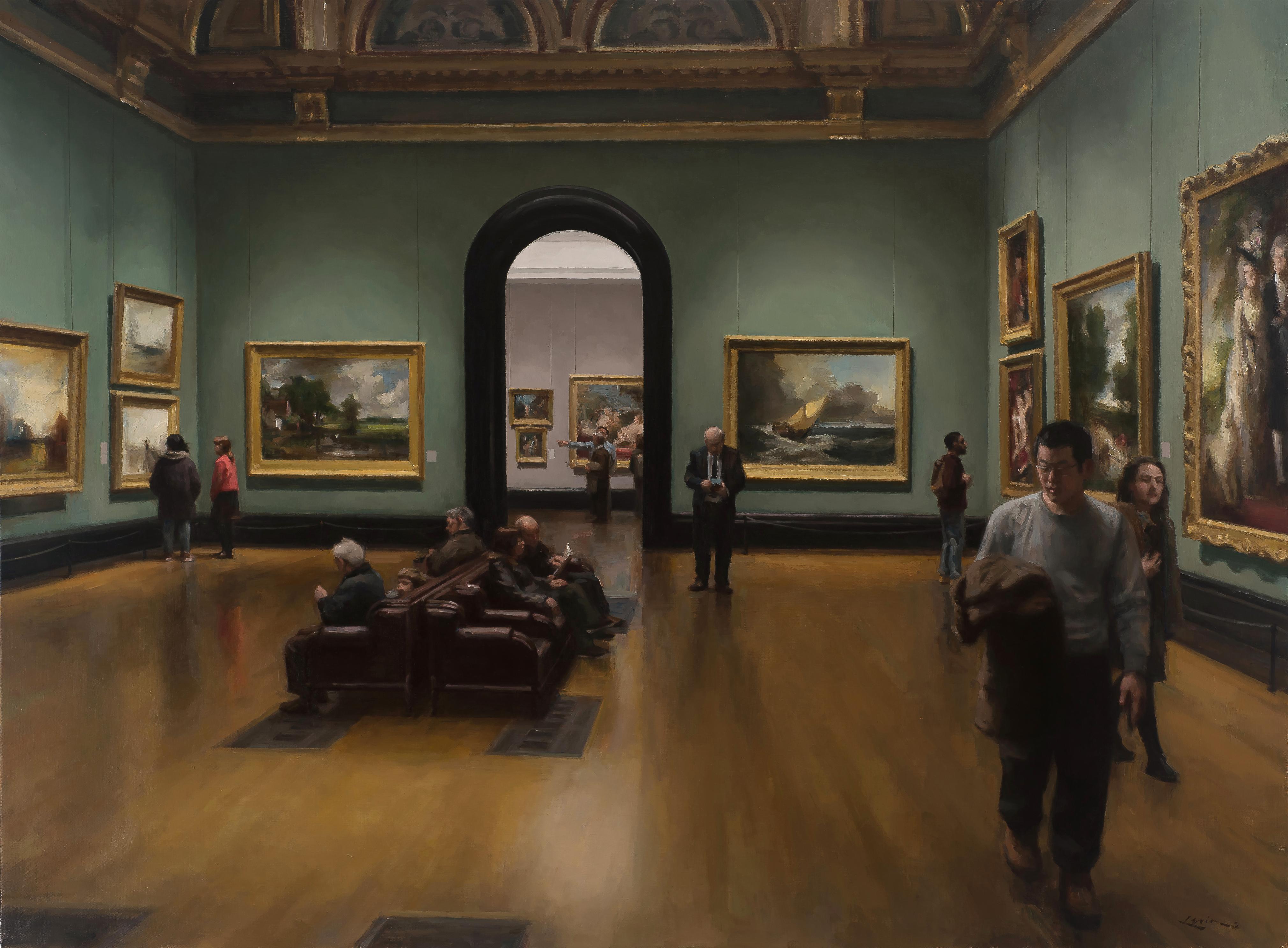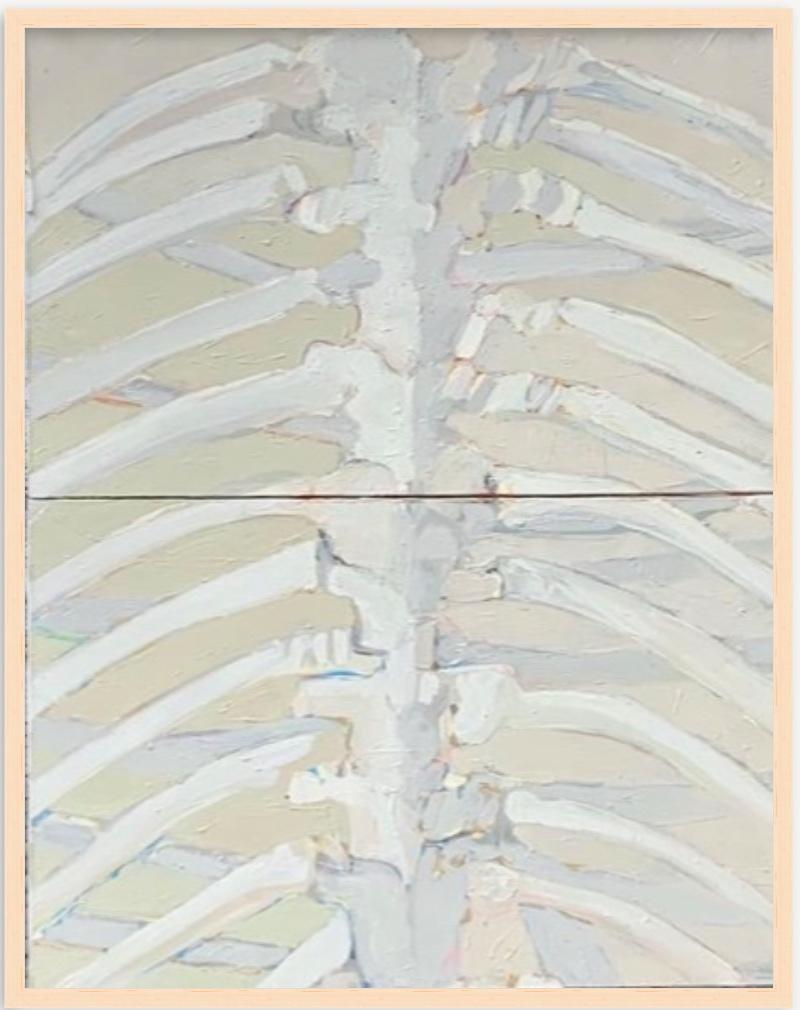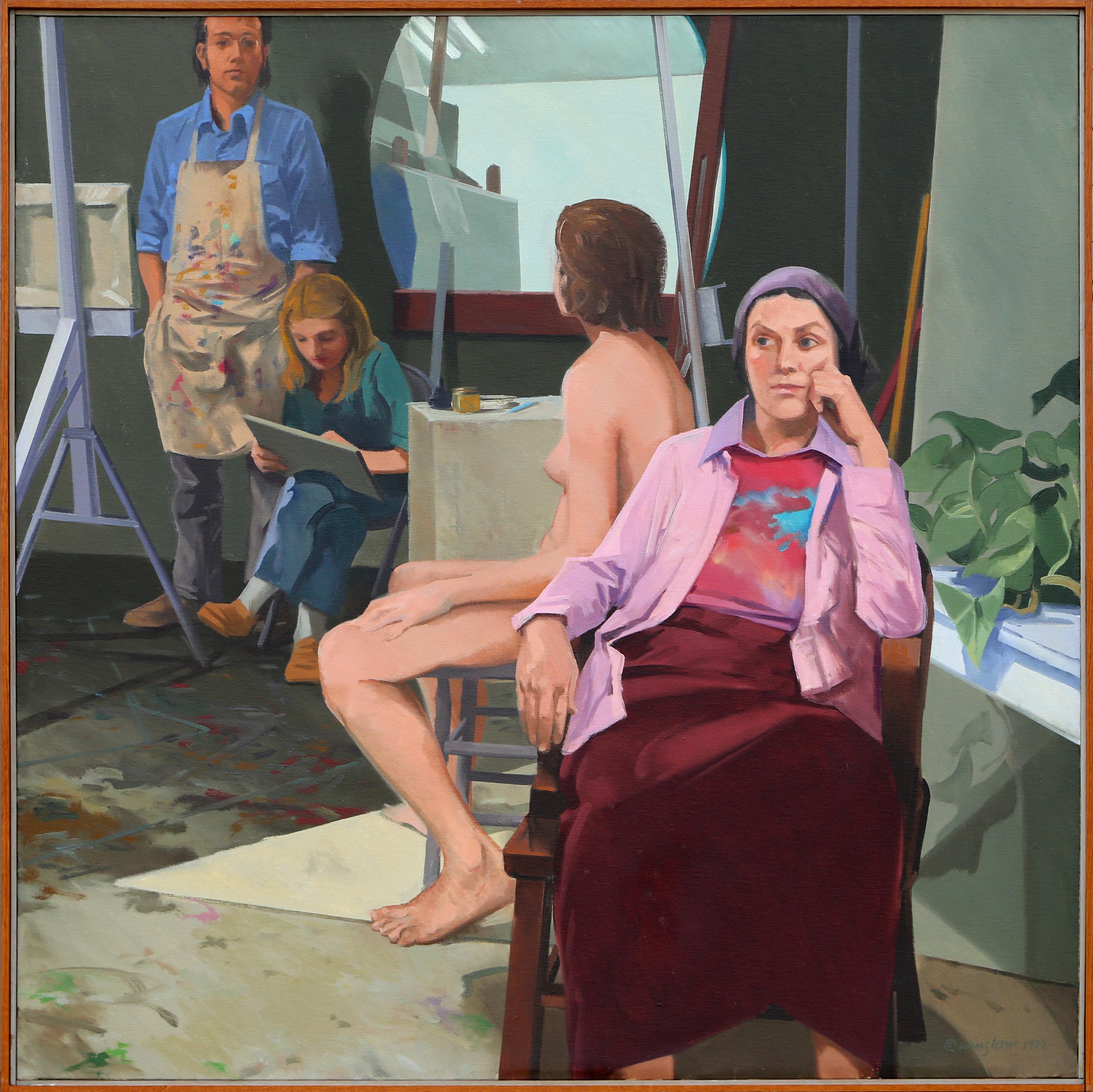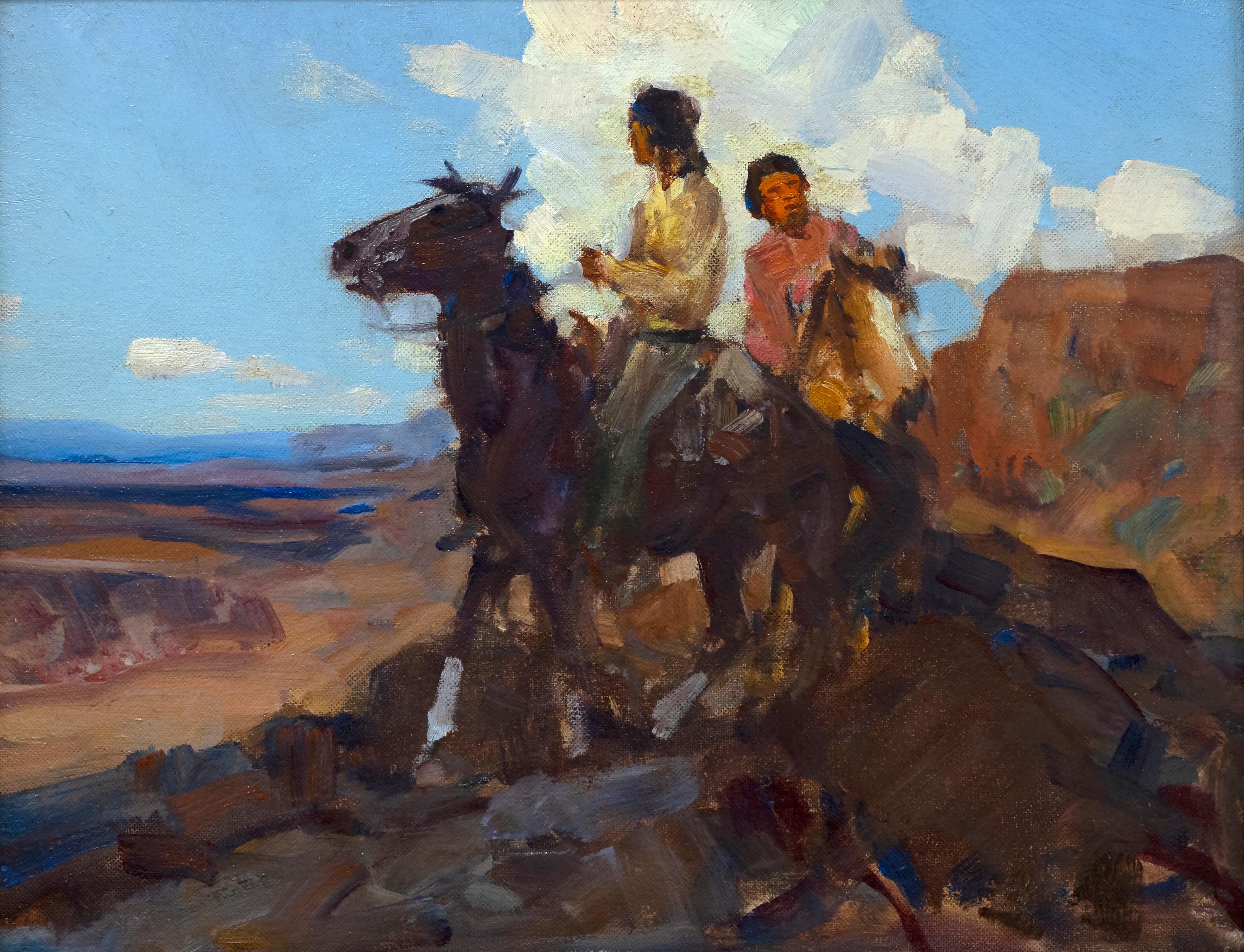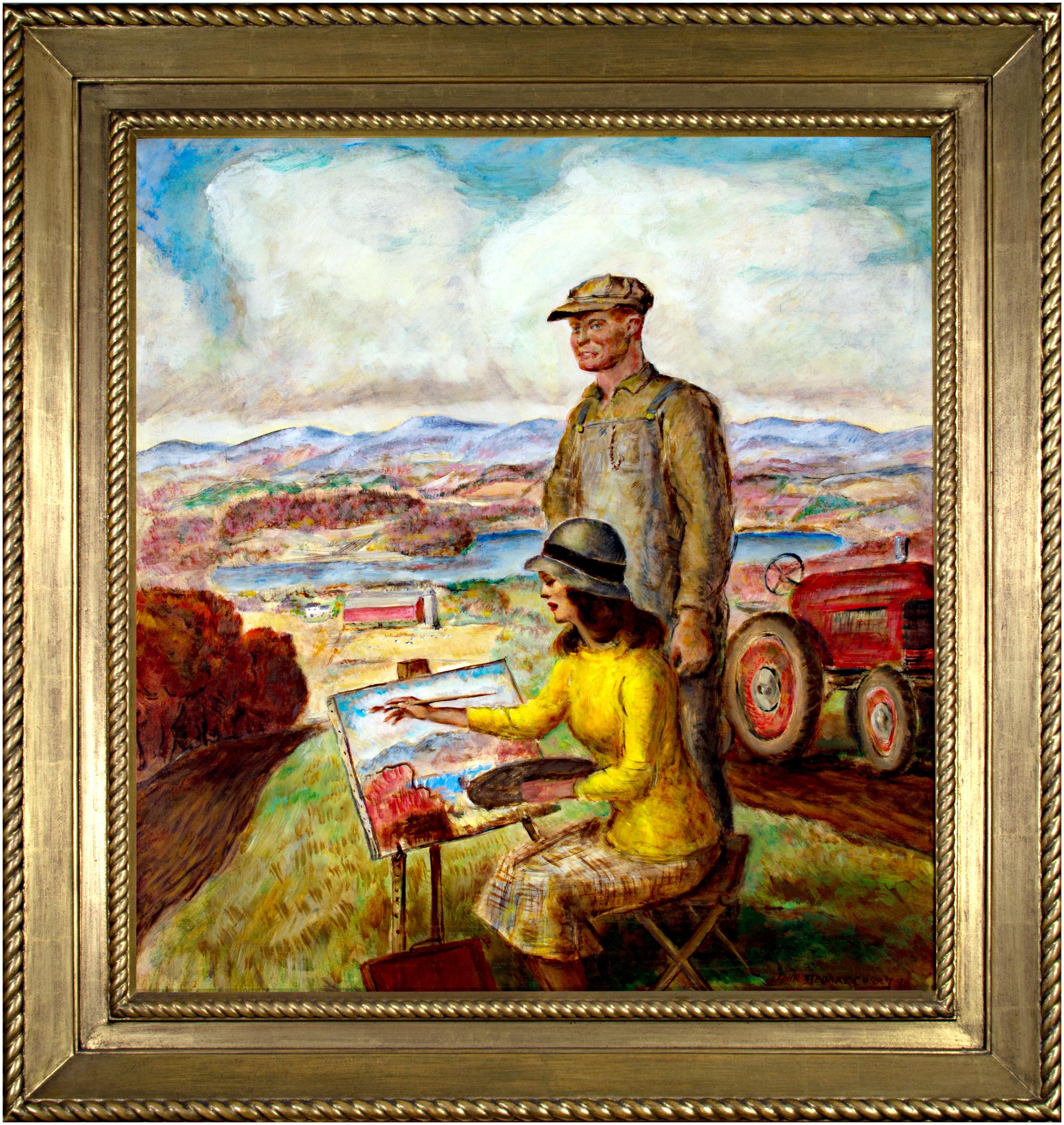Items Similar to Same As It Ever Was
Want more images or videos?
Request additional images or videos from the seller
1 of 4
Sherri WolfgangSame As It Ever Was2021
2021
About the Item
Millennials were raised to strive for the best possible life, because that is what had been given to them — access to opportunity, and the emotional support they’d need to achieve it. Hovering family and friends laud their successes, listen to their complaints, and clear the paths of the obstacles and challenges that made their own experiences so trying. And yet, despite this foolproof, cushy narrative that was created for them, millennials struggle, leaving the generation that raised them wondering — what happened?
With the unrelenting exposure to news, social media, and the increasing societal pressures to “achieve” what their parents did amidst a completely different economy and culture, paralyzing anxiety and fear of the unknown future have taken root in their young minds. At the same time, they acknowledge and celebrate the diversity of their experiences, of race, sexual identity, economic status, religion. Those who have been lucky enough to be employed in a post-2008 economy watch out for their friends stuck in internships, in endless assistant-ships, behind the counter of their local coffee shop. While their situation is remarkably different from that of generations before them, they still struggle to obtain the future that was envisioned for them.
Represented by George Billis Gallery. AMERICAN PATHOS attempts to capture the dark cloud of millennial doubt that constantly rears its head, even during periods of stability and satisfaction. Moments of joy, of togetherness, are counterbalanced by the age-old question, “Now what?” In the wake of the COVID-19 pandemic, the social and emotional issues engendered by this juxtaposition become even more urgent. This is particularly evidenced in All The Young Dudes, which depicts five men, all but one of whose gazes avoid the viewer; on the table in front of them, the dark screens of their smartphones contrast against that day’s grim headlines. They do not quite know what the next step is, inviting uncertainty, melancholy, and desolation to descend as they try to figure it out. The series portraitizes millennials at that moment in time.
- Creator:Sherri Wolfgang (American)
- Creation Year:2021
- Dimensions:Height: 48 in (121.92 cm)Width: 60 in (152.4 cm)
- Medium:
- Movement & Style:
- Period:
- Condition:
- Gallery Location:Fairfield, CT
- Reference Number:1stDibs: LU183210323542
About the Seller
5.0
Vetted Seller
These experienced sellers undergo a comprehensive evaluation by our team of in-house experts.
Established in 1996
1stDibs seller since 2015
239 sales on 1stDibs
Typical response time: 22 hours
- ShippingRetrieving quote...Ships From: Fairfield, CT
- Return PolicyThis item cannot be returned.
More From This SellerView All
- No SwimmingBy Kevin FrankLocated in Fairfield, CTKevin Frank is represented by George Billis Gallery. Kevin Frank statement: For me, combining the techniques of the ancient Greco-Roman painters with those of the old and new master...Category
2010s American Realist Figurative Paintings
MaterialsCanvas, Oil
- American FinchBy Kevin FrankLocated in Fairfield, CTKevin Frank is represented by George Billis Gallery. Kevin Frank statement: For me, combining the techniques of the ancient Greco-Roman painters with those of the old and new master...Category
2010s American Realist Figurative Paintings
MaterialsCanvas, Oil
- Tyler G. WilsonBy Alex BlasLocated in Fairfield, CTIn his current series, “In Your Room”, Alex Blas explores modern day life by examining the private spaces of his friends. In these paintings, Blas carefully considers the shadows, co...Category
2010s American Realist Figurative Paintings
MaterialsOil, Canvas
- Sam MurtiBy Alex BlasLocated in Fairfield, CTIn his current series, “In Your Room”, Alex Blas explores modern day life by examining the private spaces of his friends. In these paintings, Blas carefully considers the shadows, co...Category
2010s American Realist Figurative Paintings
MaterialsOil, Canvas
- Catch (study), not framedBy Wes HempelLocated in Fairfield, CTA walk through any major museum will reveal paintings that depict or legitimate only certain kinds of experience. Despite the good intentions of critical theorists questioning the va...Category
2010s American Realist Figurative Paintings
MaterialsOil, Canvas
- Calling and Unexpected Blessing II - 2 paintings by Wes HempelBy Wes HempelLocated in Fairfield, CTTwo paintings by Wes Hempel, Calling, 44x32" and Unexpected Blessing II, 48x32"Category
2010s American Realist Figurative Paintings
MaterialsCanvas, Oil
You May Also Like
- National Gallery, London - museum interior, London, paintings by Turner and moreBy Steven J. LevinLocated in Sag Harbor, NYAn oil painting of the interior of The National Gallery museum in London. A multi-figure composition, of people inside a grand room filled with some of the world's most famous paintings, including John Constable's 1821 painting "The Hay Wain", and J.M.W. Turner's moody 1801 painting "Dutch Boats...Category
21st Century and Contemporary American Realist Interior Paintings
MaterialsOil, Canvas
- VictoryLocated in Ibadan, Oyo"Victory" emanates a sense of vibrancy and vitality, drawing viewers into its world of anticipation and celebration. The central figure, depicted with a wide grin and laughter lines ...Category
21st Century and Contemporary American Realist Mixed Media
MaterialsCanvas, Mixed Media, Oil, Acrylic
- 1960s "Rib Cage" Oil on Canvas Painting Art Institute of ChicagoBy Edith Isaac-RoseLocated in Arp, TXEdith Isaac-Rose "Rib Cage" c.1960 Oil on canvas 28"x36" framed in natural wood gallery frame 29.5"x37.5" Painted on two canvases Unsigned, came from a portfo...Category
Mid-20th Century American Realist Abstract Paintings
MaterialsCanvas, Oil
- In the Studio, Large Painting by John WinslowLocated in Long Island City, NYA large (48 x 48 inch) painting of a scene in the art studio by American artist John Winslow (1938 - ).Category
1970s American Realist Figurative Paintings
MaterialsCanvas, Oil
- ScoutingBy Frank Tenney JohnsonLocated in Palm Desert, CA"Scouting" is an oil on canvas painting by Frank Tenney Johnson. The framed piece measures 23 3/4 x 27 3/4 x 3 1/4 inches. Johnson was well-known for his work of the American west, particularly for his portrayal of cowboys at night, lit by moonlight. Johnson utilized knives and fingers when painting, so his work is recognizable for its distinctive marks. Provenance: Biltmore Galleries, Scottsdale...Category
Early 20th Century American Realist Landscape Paintings
MaterialsCanvas, Oil
- 'Sketching Wisconsin' original oil painting, SignedBy John Steuart CurryLocated in Milwaukee, WIJohn Steuart Curry "Sketching Wisconsin," 1946 oil on canvas 31.13 x 28 inches, canvas 39.75 x 36.75 x 2.5 inches, frame Signed and dated lower right Overall excellent condition Presented in a 24-karat gold leaf hand-carved wood frame John Steuart Curry (1897-1946) was an American regionalist painter active during the Great Depression and into World War II. He was born in Kansas on his family’s farm but went on to study art in Chicago, Paris and New York as young man. In Paris, he was exposed to the work of masters such as Peter Paul Rubens, Eugène Delacroix and Jacques-Louis David. As he matured, his work showed the influence of these masters, especially in his compositional decisions. Like the two other Midwestern regionalist artists that are most often grouped with him, Grant Wood (American, 1891-1942) and Thomas Hart Benton (American, 1889-1975), Curry was interested in representational works containing distinctly American subject matter. This was contrary to the popular art at the time, which was moving closer and closer to abstraction and individual expression. Sketching Wisconsin is an oil painting completed in 1946, the last year of John Steuart Curry’s life, during which time he was the artist-in-residence at the University of Wisconsin in Madison. The painting is significant in Curry’s body of work both as a very revealing self-portrait, and as a landscape that clearly and sensitively depicts the scenery of southern Wisconsin near Madison. It is also a portrait of the artist’s second wife, Kathleen Gould Curry, and is unique in that it contains a ‘picture within a picture,’ a compositional element that many early painting masters used to draw the eye of the viewer. This particular artwork adds a new twist to this theme: Curry’s wife is creating essentially the same painting the viewer is looking at when viewing Sketching Wisconsin. The triangular composition of the figures in the foreground immediately brings focus to a younger Curry, whose head penetrates the horizon line and whose gaze looks out towards the viewer. The eye then moves down to Mrs. Curry, who, seated on a folding stool and with her hand raised to paint the canvas on the easel before her, anchors the triangular composition. The shape is repeated in the legs of the stool and the easel. Behind the two figures, stripes of furrowed fields fall away gently down the hillside to a farmstead and small lake below. Beyond the lake, patches of field and forest rise and fall into the distance, and eventually give way to blue hills. Here, Curry has subverted the traditional artist’s self-portrait by portraying himself as a farmer first and an artist second. He rejects what he sees as an elitist art world of the East Coast and Europe. In this self-portrait he depicts himself without any pretense or the instruments of his profession and with a red tractor standing in the field behind him as if he was taking a break from the field work. Here, Curry’s wife symbolizes John Steuart Curry’s identity as an artist. Compared with a self-portrait of the artist completed a decade earlier, this work shows a marked departure from how the artist previously presented and viewed himself. In the earlier portrait, Curry depicted himself in the studio with brushes in hand, and with some of his more recognizable and successful canvases behind him. But in Sketching Wisconsin, Curry has taken himself out of the studio and into the field, indicating a shift in the artist’s self-conception. Sketching Wisconsin’s rural subject also expresses Curry’s populist ideals, that art could be relevant to anyone. This followed the broad educational objectives of UW’s artist-in-residence program. Curry was appointed to his position at the University of Wisconsin in 1937 and was the first person to hold any such position in the country, the purpose of which was to serve as an educational resource to the people of the state. He embraced his role at the University with zeal and not only opened the doors of his campus studio in the School of Agriculture to the community, but also spent a great deal of time traveling around the state of Wisconsin to visit rural artists who could benefit from his expertise. It was during his ten years in the program that Curry was able to put into practice his belief that art should be meaningful to the rural populace. However, during this time he also struggled with public criticism, as the dominant forces of the art market were moving away from representation. Perhaps it was Curry’s desire for public acceptance during the latter part of his career that caused him to portray himself as an Everyman in Sketching Wisconsin. Beyond its importance as a portrait of the artist, Sketching Wisconsin is also a detailed and sensitive landscape that shows us Curry’s deep personal connection to his environment. The landscape here can be compared to Wisconsin Landscape of 1938-39 (the Metropolitan Museum of Art), which presents a similar tableau of rolling hills with a patchwork of fields. Like Wisconsin Landscape, this is an incredibly detailed and expressive depiction of a place close to the artist’s heart. This expressive landscape is certainly the result of many hours spent sketching people, animals, weather conditions and topography of Wisconsin as Curry traveled around the state. The backdrop of undulating hills and the sweeping horizon, and the emotions evoked by it, are emphatically recognizable as the ‘driftless’ area of south-central Wisconsin. But while the Metropolitan’s Wisconsin Landscape conveys a sense of uncertainty or foreboding with its dramatic spring cloudscape and alternating bands of light and dark, Sketching Wisconsin has a warm and reflective mood. The colors of the foliage indicate that it is late summer and Curry seems to look out at the viewer approvingly, as if satisfied with the fertile ground surrounding him. The landscape in Sketching Wisconsin is also revealing of what became one of Curry’s passions while artist-in-residence at UW’s School of Agriculture – soil conservation. When Curry was a child in Kansas, he saw his father almost lose his farm and its soil to the erosion of The Dust Bowl. Therefore, he was very enthusiastic about ideas from UW’s School of Agriculture on soil conservation methods being used on Wisconsin farms. In Sketching Wisconsin, we see evidence of crop rotation methods in the terraced stripes of fields leading down the hillside away from the Curry’s and in how they alternate between cultivated and fallow fields. Overall, Sketching Wisconsin has a warm, reflective, and comfortably pastoral atmosphere, and the perceived shift in Curry’s self-image that is evident in the portrait is a positive one. After his rise to favor in the art world in the 1930’s, and then rejection from it due to the strong beliefs presented in his art, Curry is satisfied and proud to be farmer in this self-portrait. Curry suffered from high blood...Category
1940s American Realist Figurative Paintings
MaterialsCanvas, Oil
Recently Viewed
View AllMore Ways To Browse
Same Old
Coffee Shop
Dark Clouds
Wolfgang Stiller
Mens Watch 2021
Shop Counter Table
The Dude
2008 Mens Watch
Sherri Wolfgang
4 Figures
Mother And Daughter
Oil Painting Modern Portrait
Street Of London Painting
Antique Figurative Oil Painting
Venice Paintings
Girl Original
Large Black Figurative Art
Girl Vintage Art
